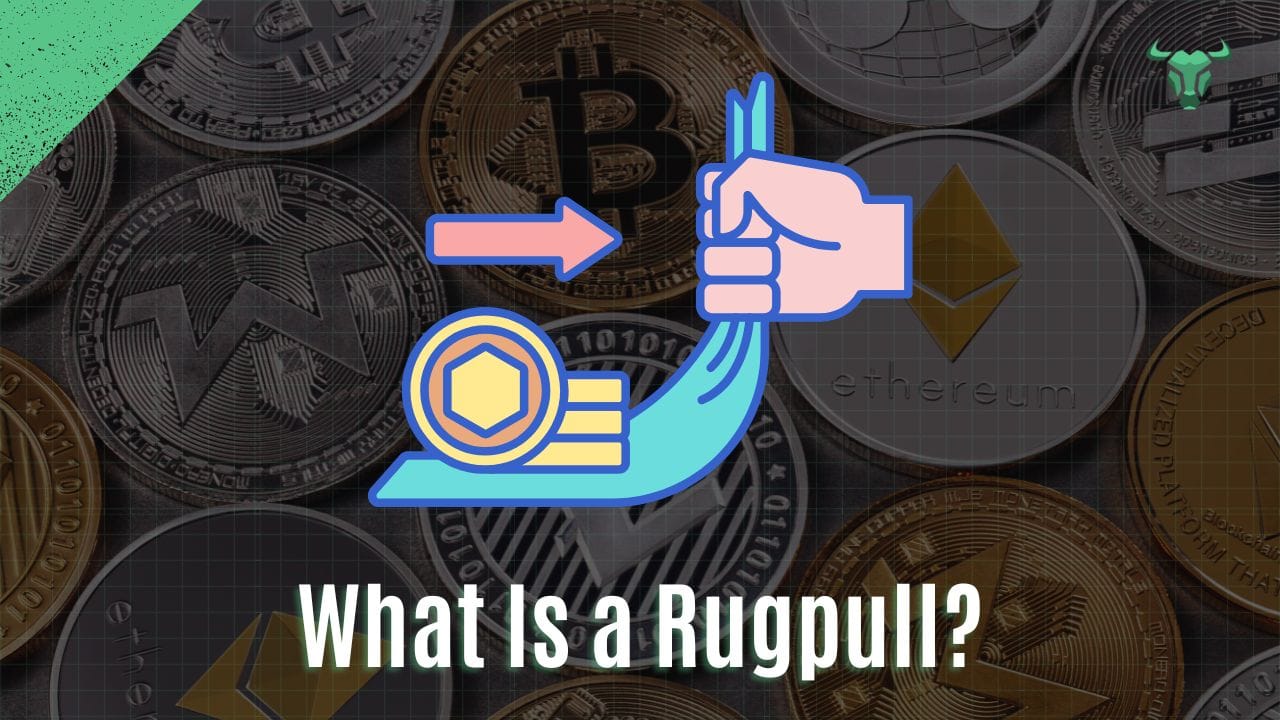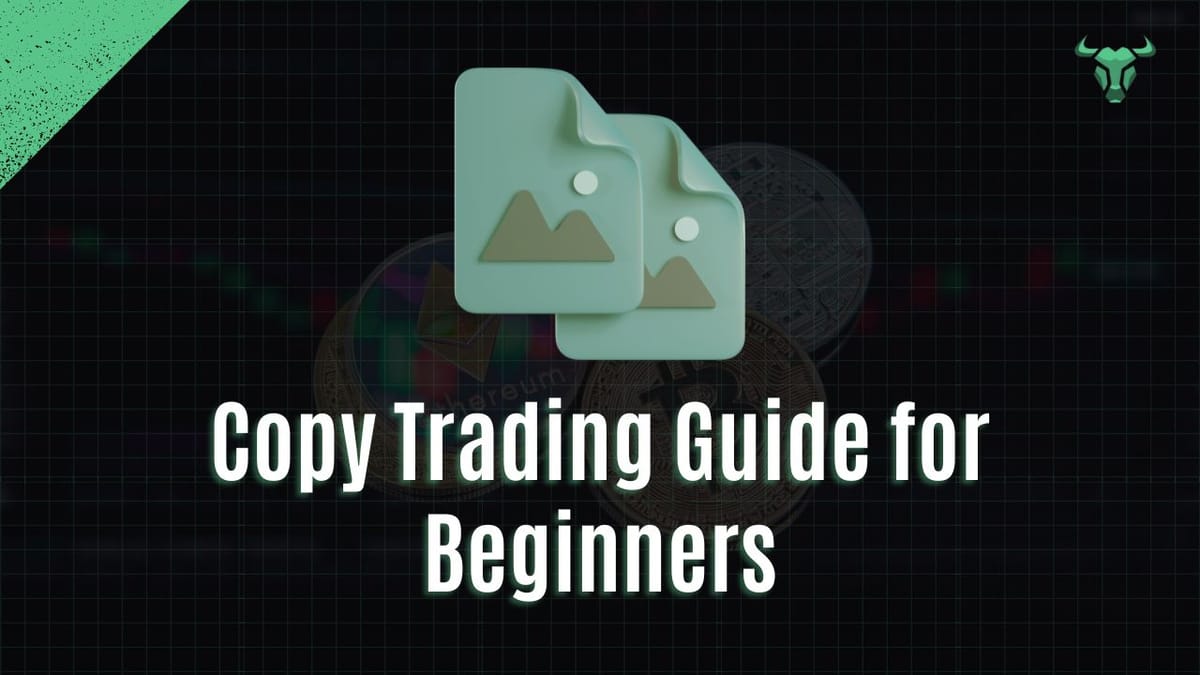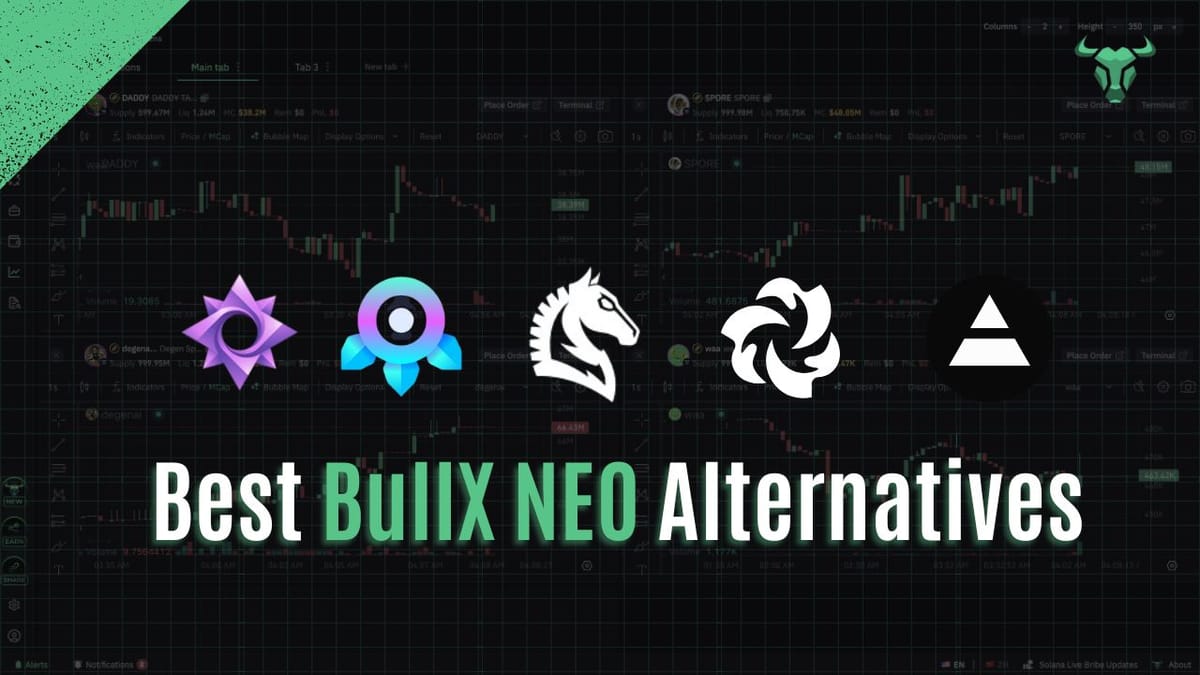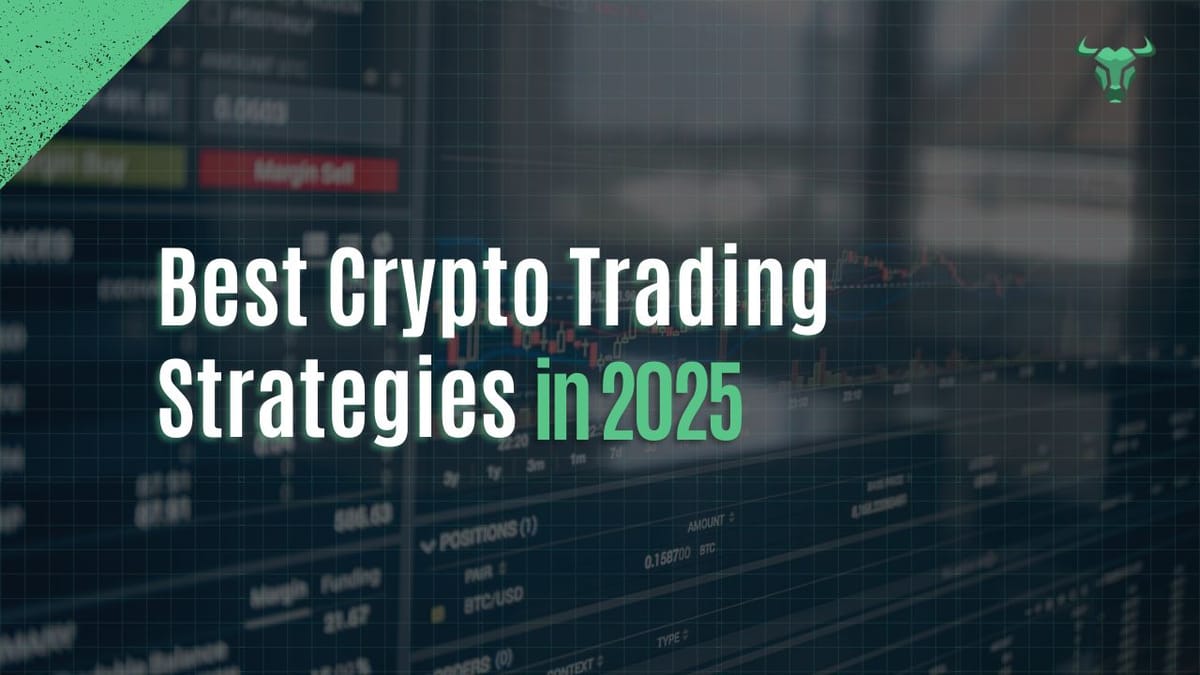What Is a Rugpull?

Ever heard of a rugpull in the crypto world? It's a term you'll see a lot, and honestly, it's pretty important to know what it means.
Basically, it's when the people behind a new crypto project suddenly disappear with everyone's money. You might be thinking, 'How does that even happen?' Well, it's often tied to how these digital coins are set up and traded.
We're going to break down what a rugpull is, how these scams work, and most importantly, how you can try to avoid becoming a victim.
It’s not exactly rocket science, but you do need to pay attention.
Key Takeaways
- A rugpull is when creators of a crypto project abandon it and run off with investors' funds, often by draining liquidity.
- Common tactics involve making it impossible to sell tokens after taking money, or promising features that never materialize.
- You can spot a potential rugpull by looking at the token's setup (tokenomics), the team's background, and whether their code has been checked.
- Protecting yourself means doing your homework before investing, understanding the risks in decentralized finance (DeFi), and not putting all your money into one place.
- While blockchain offers transparency, the anonymity it can provide, along with smart contract flaws, are often exploited in rugpull schemes.
Understanding the Rugpull Phenomenon

So, you're probably wondering what exactly a rugpull is in the wild world of crypto.
Basically, it's a type of scam where the people behind a new cryptocurrency project suddenly disappear, taking all the invested money with them.
Think of it like someone pulling a rug out from under your feet – one minute you're standing, the next you're on the floor.
This leaves investors holding worthless tokens and with no way to get their money back.
It's a pretty nasty trick that has unfortunately become common.
Defining a Rugpull in the Crypto Space
At its core, a rugpull is when the creators of a cryptocurrency project, often a new token on a platform like Binance Smart Chain or Ethereum, abandon the project and cash out their tokens.
They typically do this after hyping up the token and attracting a lot of investment.
The scam artists then sell off their own holdings, which causes the token's price to plummet. Because they usually control the project's liquidity, they can drain it, making it impossible for anyone else to sell their tokens.
It's a pretty straightforward way to steal funds, and unfortunately, it's quite effective if people aren't careful. As one explanation puts it, it makes it "nearly impossible for investors to recover their money by selling the worthless tokens".
How a Rugpull Operates
These schemes often start with a lot of hype. Developers might promise amazing features, partnerships, or a revolutionary use case.
They'll create a slick website, active social media channels, and maybe even a whitepaper. Then, they'll launch their token, often with a low initial price to attract buyers.
As more people buy in, the price goes up, creating a sense of FOMO (fear of missing out).
This is when the scammers make their move. They might have a large portion of the tokens themselves, and when they sell them all at once, the price crashes.
Simultaneously, they often remove the liquidity from decentralized exchanges, meaning no one can trade the token anymore.
It’s a quick way to make a lot of money, and platforms like BullX NEO are trying to help traders spot these opportunities early by analyzing things like TVL spikes and new wallet activity.
The Impact of Rugpulls on Investors
The impact on investors can be devastating. People can lose their entire investment, sometimes thousands or even millions of dollars.
This isn't just about losing money; it's about losing trust in the crypto space. When these scams happen, it makes people wary of legitimate projects too.
It can lead to significant financial hardship and emotional distress for those affected.
The crypto market is already volatile, and scams like rugpulls add another layer of risk that can be hard to manage. It really highlights the need for careful research before putting your money into any new digital asset.
Common Tactics Used in Rugpull Schemes

When you're looking at new crypto projects, it's easy to get excited about the potential gains.
But scammers are always finding new ways to trick people, and understanding their methods is your first line of defense.
Let's break down some common tactics they use.
Liquidity Draining Explained
This is a pretty straightforward, albeit nasty, trick. Imagine a project launches a new token.
To make it seem legitimate and tradable, they create a liquidity pool, usually on a decentralized exchange like Uniswap or PancakeSwap. This pool pairs their new token with a more established cryptocurrency, like ETH or BNB.
Investors buy the new token using the established crypto, and the scammers lock up a good chunk of this liquidity. The problem arises when the scammers suddenly remove all the established crypto from the pool, leaving investors holding tokens that are suddenly worth next to nothing.
They essentially drain the pool, leaving you with illiquid assets.
It’s a quick way for them to cash out. You might see rapid, large trades happening just before this, which can be a sign of wash trading, a common practice in these scams.
Token Locking and Unlocking
Sometimes, scammers will lock up a portion of the project's tokens for a set period. This is often presented as a way to show commitment and prevent early dumping by the team.
However, they might set a very short lock-up period or, worse, have a backdoor that allows them to unlock and sell their tokens whenever they please, even before the stated lock-up expires.
This sudden sell-off can crash the token's price. It’s all about creating a false sense of security.
Misleading Project Roadmaps
Scammers are good at painting a pretty picture. They'll often create elaborate roadmaps with exciting future developments, partnerships, and features.
These roadmaps are designed to keep investors hyped and believing in the long-term vision of the project. They might promise things like exchange listings, new product launches, or integrations with other platforms.
Sometimes, tools like the BullX Neo Migration Sniper can help you track tokens during their transition to new platforms, potentially capitalizing on price pumps.
However, these roadmaps are frequently just smoke and mirrors, with no intention of ever being fulfilled.
Once they've collected enough funds, the project simply disappears, leaving the roadmap unfulfilled and investors empty-handed. It's a classic bait-and-switch.
Scammers often use professional-looking websites and whitepapers to make their projects seem legitimate. They want you to believe in a future that doesn't exist, all to get your money quickly.
Identifying Potential Rugpull Red Flags

So, you're looking into a new crypto project, and you want to make sure you're not about to get burned.
That's smart.
There are definitely some signs you can look out for before you put your money in. It’s all about doing your homework.
Analyzing Tokenomics and Supply
First off, take a good look at the tokenomics. How many tokens are there in total? Is the supply fixed or inflationary?
A massive, unlimited supply can be a red flag, as it can lead to devaluation. Also, check who holds the tokens.
If a few wallets own a huge chunk, they could dump their holdings and crash the price. Tools like BullX NEO Vision can help you see this distribution easily. You want to see a spread of holders, not just a couple of whales.
Scrutinizing Project Teams and Communication
Who is behind the project?
Are the developers public, or are they hiding behind anonymous profiles?
While anonymity isn't always a scam, it does make it harder to hold people accountable.
Look for a team with a track record, or at least clear communication channels. If they're constantly hyping the project but never actually show progress or answer tough questions, that's not a good sign.
A lack of transparency is a major warning.
You should be able to find information about their plans and how they intend to achieve them. If they're vague about their roadmap or the utility of the token, be cautious.
Evaluating Smart Contract Audits
Smart contracts are the backbone of most crypto projects.
Have they been audited by a reputable third-party firm?
An audit checks for vulnerabilities and potential backdoors that developers could exploit. If a project claims to have an audit but won't show you the report, or if the audit was done by an unknown entity, take that with a grain of salt.
You can often find links to audits on the project's website or their whitepaper. It's also worth checking if the liquidity is locked for a significant period.
This means the developers can't just pull the liquidity and disappear with the funds, a common tactic in crypto scams.
Here are some things to keep in mind:
- Unrealistic Promises: If it sounds too good to be true, it probably is. Promises of guaranteed, sky-high returns are a classic scam indicator.
- Aggressive Marketing: While some hype is normal, overly aggressive marketing, especially with bots and fake engagement, can be a sign of desperation or deception.
- Lack of Utility: Does the token actually do anything? If it's just for trading or has no clear use case, it's riskier.
Remember, even with these checks, the crypto market is inherently risky. Always invest only what you can afford to lose. Using tools to analyze projects, like BullX NEO Vision, can give you an edge in spotting potential issues before they become problems.
Protecting Yourself from Crypto Scams

It’s easy to get excited about the potential gains in the crypto world, but you’ve got to be smart about it.
Scams are unfortunately a big part of the landscape, and knowing how to spot them is key.
Think of it like this: you wouldn't just hand your money to a stranger on the street, right?
The same caution applies here.
Due Diligence Before Investing
Before you put any money into a new coin or project, do your homework. Seriously, this is the most important step.
- Look into the project’s whitepaper – does it make sense?
- Who are the people behind it?
- Are they transparent about their team and their plans?
A lot of scams try to hide who they are, so if you can’t find clear information about the team, that’s a big red flag. Also, check out the project’s community.
Are people asking legitimate questions, or is it just a bunch of hype and bots?
You can often find lists of known scams to help you avoid them, like the FTC's consumer alerts.
Understanding Decentralized Finance Risks
DeFi, or decentralized finance, is where a lot of innovation happens, but it also comes with its own set of risks. Smart contracts, the code that runs DeFi applications, can have bugs or vulnerabilities.
Even projects that seem legitimate can be targeted by hackers.
For example, a project might drain liquidity, which is a common tactic in rug pulls. You need to understand that when you interact with DeFi, you’re often dealing with code that hasn’t been fully vetted, and there’s no central authority to bail you out if something goes wrong.
It’s why understanding the underlying technology is so important. Projects like BullX NEO aim to improve security in DeFi, but you still need to be aware of the inherent risks involved in this new financial frontier.
Diversifying Your Digital Asset Portfolio
Don't put all your eggs in one basket.
This is classic investment advice, and it’s super relevant in crypto. If you invest everything into one coin, and that coin turns out to be a scam or just tanks in value, you could lose it all.
Spread your investments across different types of digital assets. Maybe some established cryptocurrencies, some promising altcoins, and perhaps even some exposure to NFTs or DeFi protocols, if you've done your research.
This way, if one investment doesn't work out, you still have others. It’s a way to manage your risk and protect your overall capital.
Remember, crypto trading requires robust risk management to navigate its volatile markets.
The Role of Blockchain Technology in Rugpulls
Blockchain technology, the backbone of cryptocurrencies, plays a dual role when it comes to rug pulls.
On one hand, its inherent transparency and traceability can help expose fraudulent activities.
On the other, certain aspects of blockchain and smart contract design can be exploited by scammers. Understanding these dynamics is key to protecting yourself.
Smart Contracts and Vulnerabilities
Smart contracts are self-executing contracts with the terms of the agreement directly written into code.
They automate transactions and processes on the blockchain.
While efficient, poorly written or intentionally malicious smart contracts can contain vulnerabilities.
Scammers can embed hidden functions, often called "exit hooks," that allow them to drain liquidity pools or lock investor funds unexpectedly.
For instance, a contract might appear to function normally, but a hidden command could be triggered to remove all the paired cryptocurrency (like ETH or BNB) from the trading pair, leaving the project's token worthless.
This is a common method used in liquidity draining explained schemes.
Anonymity and Illicit Activities
The pseudonymous nature of many blockchain transactions can sometimes shield the identities of those perpetrating rug pulls.
While transactions are recorded on the public ledger, linking those transactions to real-world identities can be challenging.
This anonymity can embolden bad actors, making it harder for law enforcement to track and apprehend them. However, advanced blockchain analytics tools are increasingly being used to trace illicit funds, even across different blockchains.
For those looking to trade more securely and potentially avoid some of these pitfalls, tools like the bullx neo trading bot can offer automated strategies, but it's still vital to do your own research on the projects you interact with.
Transparency and Traceability
Despite the potential for anonymity, blockchain technology fundamentally offers a high degree of transparency.
Every transaction, every contract interaction, is recorded permanently on the ledger.
This means that even after a rug pull, the flow of funds can often be traced.
This traceability is invaluable for investigations and for the community to understand how a scam unfolded. Platforms that offer enhanced tracking, like the BullX Wallet Tracker, can help you monitor market movements and potentially identify suspicious activity.
While tools like the bullx neo telegram bot can help manage trades, understanding the underlying blockchain mechanics is still important. Gaining bullx neo access might provide tools, but vigilance is paramount.
The decentralized nature of blockchain means that while it can be a powerful tool for transparency, it also relies on the integrity of the code and the vigilance of the users. Scammers exploit the trust placed in code and the speed of the market to execute their schemes before the community can react. The existence of projects like bullxneo highlights the ongoing development in the space, but doesn't negate the need for caution.
Ultimately, while blockchain provides the infrastructure for decentralized finance, it doesn't inherently prevent scams like a rug pull in cryptocurrency. It's the combination of code vulnerabilities, market psychology, and human intent that creates the conditions for these fraudulent activities.
Being aware of how blockchain features can be misused is a critical step in avoiding becoming a victim of a rug pull in cryptocurrency.
Remember, thorough research is your best defense against schemes like rug pulls are a form of crypto fraud.
Case Studies of Notorious Rugpulls
Looking back at some of the biggest scams can really help you understand what to watch out for. It’s like learning from other people’s mistakes, right?
You don't want to be the next headline.
Lessons Learned from Past Incidents
We’ve seen a lot of these happen. Think about the Squid Game token scam; it popped up, got everyone excited, and then vanished.
The core idea was to capitalize on a popular trend, but the execution was pure theft.
Another example is the Bored Bunny NFT rug pull, which targeted the NFT craze.
These incidents show how quickly scammers can exploit new technologies or popular culture.
- Sudden Liquidity Draining: Many projects, like Luna Yield, suddenly remove all the trading liquidity, making the token worthless overnight.
- Exploiting Hype: Scammers often create a lot of buzz around a new token or NFT, promising huge returns, only to disappear once enough money is invested.
- Team Disappearance: After draining funds, the developers often go silent, deleting social media accounts and leaving investors with worthless tokens.
It’s not just about the money lost; it’s about the trust broken. When these scams happen, they make it harder for legitimate projects to gain traction because people become overly cautious.
The Evolution of Rugpull Strategies
Scammers aren't static; they adapt. Early on, it might have been simpler liquidity drains. Now, they get more sophisticated.
For instance, some projects might appear to have solid roadmaps and even conduct smart contract audits, but these can be faked or manipulated.
You might see a project like BullX NEO, which focuses on copy trading, but then a scammer could mimic its structure with a malicious twist. They might promise advanced features or unique trading strategies, but the underlying code could be designed to steal funds.
The key is that the perceived legitimacy is often a carefully constructed facade.
- Fake Audits: Presenting audit reports that don't actually cover the malicious parts of the code.
- Phased Rugpulls: Instead of one big drain, they might slowly siphon off funds over time, making it harder to detect.
- Social Engineering: Using fake social media accounts and communities to build trust and pressure people into investing quickly. This is a common tactic seen in various crypto scams.
Understanding these patterns is your best defense. It’s about being skeptical and doing your homework before you put any money into a project.
You can use tools to analyze tokenomics and check project teams for red flags, but ultimately, your own research is the most important step.
In our 'Case Studies of Notorious Rugpulls' section, we dive into some of the shadiest deals in crypto history.
These stories show how important it is to be careful. Want to learn how to trade smarter and avoid scams?
Check out our website for tools that can help you stay safe and make better choices.
Conclusion
So, you've learned about rugpulls. It's a bit of a tricky situation, right? Basically, someone starts a crypto project, gets people to invest, and then just takes all the money and disappears. It's like a digital vanishing act, but with your hard-earned cash. Knowing this stuff is pretty important if you're thinking about getting into crypto. You've got to be careful and do your homework before putting your money anywhere. Keep an eye out for red flags, and if something feels off, it probably is. Stay safe out there.
Frequently Asked Questions
What exactly is a rugpull in simple terms?
Imagine someone creates a cool new digital coin. They hype it up, get lots of people excited to buy it, and then suddenly, they just disappear with all the money, leaving the coin worthless. That's basically a rugpull – a scam where creators pull the rug out from under investors.
How do these rugpull scams typically work?
Usually, the scammers create a new cryptocurrency and make it seem really promising. They might promise amazing features or huge profits. Once enough people invest their money, the creators quickly sell off all their own coins and drain the money from the project, making the coin's value crash.
What are some signs that a crypto project might be a scam?
It's tough, but look for projects that are super secretive about who's behind them. If they don't have clear plans or if their promises seem too good to be true, be super careful. Also, if the project's code isn't checked by independent experts (audited), that's a big warning sign.
What does 'draining liquidity' mean in a rugpull?
Think of it like this: the creators lock up a big chunk of the coins, making it seem like they can't sell them all at once. But then, they find a way to unlock them early or bypass these locks and sell everything, causing the price to plummet. It’s a way they trick people into thinking the coin is stable.
How can I avoid falling victim to a crypto scam?
You can protect yourself by doing your homework before putting any money in. Research the team, read what others are saying (but be skeptical!), check if the project's code is open and has been audited, and never invest more than you can afford to lose. Diversifying your investments across different types of assets also helps spread out the risk.
Does blockchain technology help or hurt in stopping rugpulls?
Blockchain is like a public ledger, which can actually help track down scammers sometimes because transactions are recorded. However, some parts of crypto, like anonymous wallets, can make it harder for law enforcement to catch the bad guys. So, while blockchain offers transparency, it also has features that scammers can try to exploit.
More BullX NEO Guides:










